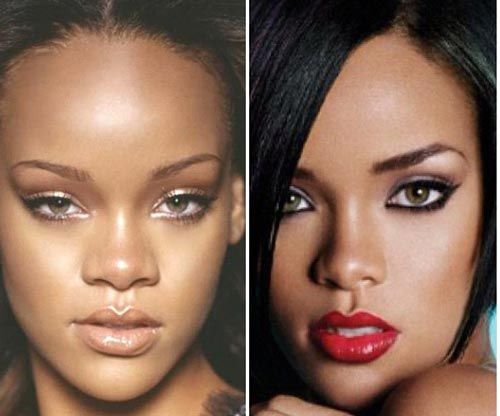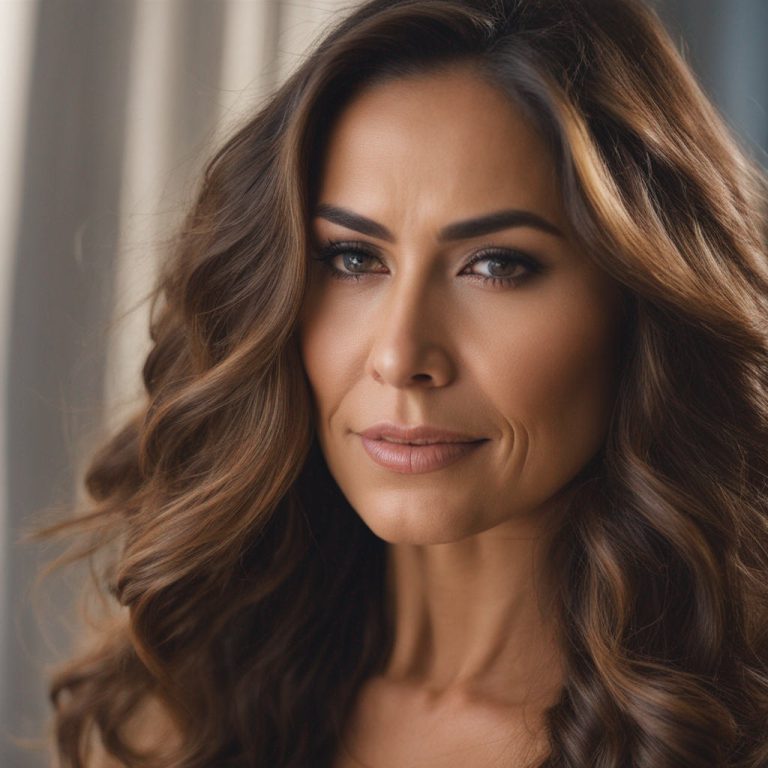African Rhinoplasty: Techniques, Recovery & Cultural Insights
Posted on: March 8, 2024
Unique Features of African American Noses
Wider Nostrils
African American noses often have wider nostrils compared to other ethnicities. This feature contributes to the distinct ethnic features of their facial structure, including the face, nasal bones, and influences on nose jobs through cosmetic surgery. Surgeons must consider this when planning rhinoplasty, often referred to as nose surgery or nose jobs, to ensure a natural look and successful “rhinoplastybeforeandafter” results, including nostril surgery adjustments.
They also need to account for the asymmetry that might be present, which is common in all noses but can be more pronounced due to the wider base of the nasal bones. This aspect is crucial in nostrilsurgery and rhinoplastybeforeandafter assessments to achieve nosegoals.
Less Pronounced Bridge
The nasal bridge in African American noses, often a focus in rhinoplastybeforeandafter and nostrilsurgery for nosegoals, is typically less pronounced, aligning with certain aesthetics. This characteristic, important in nostril surgery, requires careful enhancement by a cosmetic surgeon during rhinoplasty to avoid overcorrection, a complication which could lead to an unnatural appearance, as seen in some rhinoplasty before and after cases.
Preserving the cultural identity while enhancing this feature for educational purposes and aesthetics is crucial for linking the population. It ensures patients feel satisfied with their rhinoplastybeforeandafter results without losing their ethnic uniqueness, as the cosmeticsurgeon focuses on nostrilsurgery where natural wins.
Skin Thickness
The skin on African American noses, often a consideration in rhinoplastybeforeandafter, tends to be thicker, influencing nosegoals and nostrilsurgery decisions for a cosmeticsurgeon. This thickness, a crucial factor for rhinoplastybeforeandafter results, can affect surgical outcomes by influencing how well the nose retains its new shape post-nostrilsurgery, meeting nosegoals as assessed by the cosmeticsurgeon.
Surgeons, particularly cosmetic surgeons, have developed techniques specifically for managing this challenge in nostril surgery, ensuring that improvements, as seen in rhinoplasty before and after photos, are both visible and lasting, where natural wins.
Preserving Cultural Identity
It’s essential to preserve cultural identity while enhancing nasal features, aiming for #nosegoals with #rhinoplastybeforeandafter, through #nostrilsurgery by a #cosmeticsurgeon. Patients seek improvements that reflect their personal aesthetic goals, such as “nosegoals” through rhinoplasty before and after, while maintaining their ethnic heritage and considering nostril surgery with a cosmetic surgeon.
Surgeons strive to respect these desires by customizing procedures. They aim to enhance functionality, like improving smell, without compromising the patient’s unique facial features.
Goals and Desires in African Rhinoplasty
Natural Look
Patients often seek a rhinoplasty for a natural-looking outcome that honors their ethnic heritage, discussing possible outcomes and their bio in the office. They desire changes, such as rhinoplasty, that enhance their facial harmony without erasing their racial identity, ensuring natural wins for the person. This involves subtle modifications, a rhinoplasty approach that respects the unique features of African American noses, ensuring natural wins for the person.
A skilled plastic surgeon will focus on preserving the person’s ethnic characteristics while achieving their nose goals through rhinoplasty. The aim is to ensure the rhinoplastybeforeandafter results look seamless and authentic for the person.
Symmetry Improvement
Improving nasal symmetry is a common goal among patients. A balanced nose can significantly enhance one’s facial aesthetics.
Surgeons work meticulously in rhinoplasty to correct any asymmetries, ensuring the person’s nose aligns well with other facial features. This precision in rhinoplasty helps in achieving a harmonious facial appearance, boosting the person’s confidence.
Tip Refinement
Refining the nasal tip is another frequent request in African rhinoplasty. Patients often wish for a more defined tip through rhinoplasty that complements their overall facial structure, making the person feel more confident.
Through careful sculpting in rhinoplasty, surgeons can refine the tip of a person’s nose to make it appear more proportional and aesthetically pleasing. This requires a high level of skill and an understanding, by the person, of the delicate balance between natural beauty and cosmetic enhancement, such as in rhinoplasty.
Personalized Approach
A personalized approach is crucial in meeting individual aesthetic goals. Each patient has unique desires and concerns that need careful consideration.
Surgeons must listen attentively and craft a surgical plan tailored to each person’s needs, including rhinoplasty. By doing so, they can achieve outcomes in rhinoplasty that not only meet but exceed patient expectations, reinforcing the importance of customized care in cosmetic surgery.
Techniques for Enhancing Nasal Structures
Grafting Techniques
Grafting plays a key role in rhinoplasty, building up the nasal bridge and supporting the tip. Surgeons often use the patient’s own cartilage for rhinoplasty purposes. This material for rhinoplasty can come from the septum, ear, or ribs. It helps create a more prominent nasal bridge through rhinoplasty, which is often desired.
The use of grafts in rhinoplasty also adds support to the nasal tip. This is crucial for a well-defined shape and improved profile in rhinoplasty. It ensures the changes are both aesthetic and functional.
Cartilage Reshaping
Reshaping the cartilage, a key step in rhinoplasty, is essential for a more defined nasal profile. Surgeons meticulously sculpt the nasal cartilage. They aim to achieve balance and symmetry.
This rhinoplasty process involves precise modifications to the nasal bones as well. The goal of rhinoplasty is to refine the nose’s overall shape while respecting its natural structure.
Non-Surgical Options
For those seeking minor adjustments, non-surgical options are available. Fillers are popular for subtle enhancements without surgery. They can adjust contours and improve symmetry with minimal downtime through rhinoplasty.
These treatments offer a less invasive alternative. However, their results are temporary compared to surgical methods.
Addressing Challenges in African Rhinoplasty
Structural Integrity
Maintaining structural integrity while reshaping the nose proves challenging. Surgeons must balance altering the nasal shape with preserving its function during rhinoplasty. This delicate task requires precise surgical techniques.
Thicker skin on the nose presents another hurdle. It demands specific strategies to achieve smooth, even results post-rhinoplasty surgery. Surgeons often employ closed rhinoplasty, a method that limits visible scarring and enhances recovery.
Skin Thickness
Addressing thicker skin involves meticulous planning. Surgeons aim for subtlety in adjustments, such as rhinoplasty, to prevent an unnatural appearance. Ensuring smooth outcomes under such conditions tests a surgeon’s skill and experience in rhinoplasty.
Techniques refined from enhancing nasal structures, such as those in rhinoplasty, play a crucial role here. They help manage the unique challenges presented by thicker skin in rhinoplasty, ensuring patients receive outcomes that meet their expectations.
Surgeon Expertise
Choosing an experienced surgeon is vital. Their familiarity with ethnic rhinoplasty can make a significant difference. A skilled surgeon understands the nuances of working with diverse nasal structures and skin types in rhinoplasty.
They leverage this knowledge to navigate the complexities of African rhinoplasty successfully. Their expertise in rhinoplasty ensures patients achieve desired results while maintaining their cultural identity.
Refining the Nasal Bridge and Tip Support
Bridge Narrowing
To achieve a narrower nasal bridge, surgeons often employ rhinoplasty techniques that modify the bones at the base of the nose. This involves carefully breaking and then resetting these bones in a rhinoplasty to create a slimmer profile. The rhinoplasty process is precise, ensuring that the new shape complements the patient’s facial structure.
Surgeons might also reduce the width of the nasal bones through osteotomies during a rhinoplasty. This step is crucial for those seeking a refined bridge through rhinoplasty without altering their natural appearance drastically.
Tip Refinement
Tip refinement, a key aspect of rhinoplasty, focuses on reshaping a bulbous or dominant tip into one that’s more proportionate to the rest of the face. Techniques such as suture methods and cartilage grafting play pivotal roles in rhinoplasty. They enhance tip definition and prevent post-surgical drooping by strengthening support structures in rhinoplasty.
For patients with a short columella, extending it using a columellar strut graft during rhinoplasty can improve both aesthetics and function, leading to better breathing and an optimal upper lip show.
Support Enhancement
Strengthening tip support is vital for long-term satisfaction. Surgeons achieve this by reinforcing the link between key components of the nose’s structure during rhinoplasty. Precise suturing techniques in rhinoplasty ensure that changes made during surgery hold over time, preventing issues like drooping or collapsing.
Cartilage grafts from other parts of the body can be used in rhinoplasty to bolster weak areas, providing additional support where needed. This approach ensures that both form and function are addressed in rhinoplasty, resulting in a balanced and natural-looking outcome.
Improving Nasal Skin Quality
Pre-Operative Care
Before undergoing nose surgery (rhinoplasty), it’s crucial to prepare the nasal skin. This ensures a smoother recovery and enhances the new nose’s appearance after rhinoplasty. Patients should focus on hydration and gentle cleansing. They might also start using specialized products recommended by their cosmetic surgeon after rhinoplasty. These steps, particularly in rhinoplasty, reduce the risk of complications and improve facial harmony.
A healthy skincare routine can significantly impact the outcome. It prepares the nasal tip skin and nostrils for the rhinoplasty changes ahead.
Post-Operative Treatments
After surgery, managing edema and promoting tissue healing are top priorities, especially after rhinoplasty. Laser therapy or chemical peels often play a role in this phase. They help address skin thickness and texture in rhinoplasty, contributing to a more natural look.
Patients should follow their doctor’s advice closely during this period. This includes avoiding direct sunlight and adhering to a tailored skincare regimen. Such diligence helps maintain the lovely patient’s results long-term.
Patient Education
Educating patients about maintaining skin health post-surgery is vital. A knowledgeable patient is more likely to enjoy lasting benefits from their nostril surgery. They understand that natural wins when it comes to long-term satisfaction with their appearance.
Doctors emphasize the importance of regular check-ups. These appointments allow for monitoring healing progress and adjusting care plans as needed.
Recovery and Complications Post-Surgery
Recovery Timeline
Patients can expect a recovery period of up to two weeks for the initial swelling and bruising to subside. Most return to work within this timeframe. However, it takes up to a year for the final results to fully emerge as the nose settles into its new shape.
During the first few days, rest is crucial. Patients should keep their heads elevated and apply cold compresses to reduce swelling. Stitches usually come out or dissolve within a week if small incisions were used in the procedure.
Common Complications
Complications, while rare, can include infection, scarring, and issues with anesthesia. Scarring is minimal with African rhinoplasty due to the strategic placement of incisions inside the nose or along its natural creases.
Infections are preventable with proper care and antibiotics. It’s vital patients follow all post-operative instructions closely. Any signs of complications should prompt immediate consultation with the surgeon.

Follow-up Care
Adherence to follow-up appointments allows surgeons to monitor healing and address any concerns early on. These appointments are essential for assessing the progress towards achieving the desired outcome.
Patients must avoid strenuous activities for at least six weeks post-surgery to prevent any impact on healing. Long-term, sun protection and good skin care will help maintain results.
Cultural Respect and Individualized Approaches
Ethnic Identity
Surgeons must honor each person’s ethnic heritage. This means understanding the diverse aesthetics of different ethnic groups. They should design surgeries that enhance, not erase, these unique features.
Patients seek procedures that respect their cultural background. Surgeons need to recognize this. They should ensure their approach is sensitive to the patient’s ethnic identity. This includes avoiding a one-size-fits-all method in favor of a more personalized plan.
Open Communication
Key to achieving desired outcomes is open communication. Patients and surgeons must discuss expectations and concerns openly. This ensures the final result aligns with the patient’s vision while respecting their cultural integrity.
Surgeons should use this time to educate patients about the procedure. They should discuss potential risks and set realistic expectations. This helps build trust and ensures patients are making informed decisions for themselves.
Tailored Procedures
Every surgery should reflect the individual’s unique identity. Surgeons can achieve this by customizing techniques specific to each patient’s needs.
They must consider factors like skin thickness, facial structure, and desired profile level. These considerations help maintain the patient’s ethnic characteristics while achieving aesthetic goals.
Final Remarks
African rhinoplasty is more than just surgery; it’s about embracing your unique features while achieving your aesthetic goals. From enhancing the nasal structures to ensuring a respectful and individualized approach, each step is crucial for a successful outcome. You’ve learned about the techniques that refine the nasal bridge and tip support, improve skin quality, and the recovery process, including how to handle complications. Remember, selecting a surgeon who understands the cultural nuances and possesses the expertise in African rhinoplasty is key.
Now, it’s your turn to take the next step. If you’re considering African rhinoplasty, use this information as a guide to discuss your desires and concerns with a qualified plastic surgeon. Your journey towards achieving a nose that reflects your beauty and heritage starts today. Make sure to choose a path that respects your individuality and promotes confidence. Your ideal nose is within reach—go for it!
Frequently Asked Questions
What are the unique features of African American noses?
African American noses often have a wider base, thicker skin, and less pronounced nasal bridges compared to other ethnicities. Understanding these unique features is crucial for achieving natural-looking results in rhinoplasty.
What goals do patients typically have for African rhinoplasty?
Patients usually seek to refine their nose’s shape while preserving their cultural identity. Common goals include narrowing the nostrils, enhancing the nasal bridge, and improving tip definition without losing their ethnic characteristics.
How are nasal structures enhanced during African rhinoplasty?
Surgeons use specialized techniques like grafting to strengthen the nasal framework, refining the bridge and tip for a more balanced appearance. Each procedure is tailored to address individual structural needs and aesthetic desires.
What challenges are common in African rhinoplasty?
Challenges include managing thicker skin that can hide delicate refinements, ensuring grafts are stable in softer tissue, and achieving a natural-looking elevation of the nasal tip without overcorrection.
How is the nasal bridge and tip support refined?
Refinement involves carefully sculpting the bone and cartilage to enhance the bridge’s height and define the tip. Support is often reinforced with cartilage grafts for lasting results.
Can nasal skin quality be improved through African rhinoplasty?
Yes, although skin thickness is a genetic trait, certain techniques during surgery can subtly improve skin quality by ensuring underlying structures support the skin adequately, leading to a smoother appearance.
What should I expect during recovery from African rhinoplasty?
Expect swelling and bruising initially, with most patients returning to normal activities within 2 weeks. Full healing and final results can take up to a year as the nose fully settles into its new shape.
How important is cultural respect in African rhinoplasty?
Extremely important. A respectful approach ensures that enhancements honor the patient’s heritage and personal identity. Surgeons must be sensitive to cultural nuances and individual preferences to achieve results that patients feel proud of.





